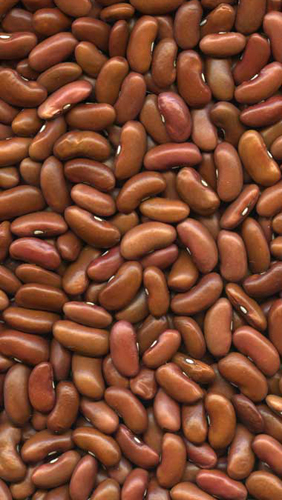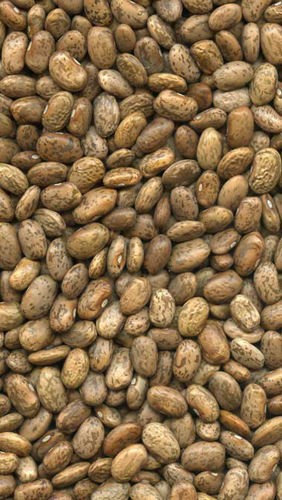Beans, Dry
Dry beans (Phaseolus vulgaris) are beans grown to maturity and harvested for the seeds within the pods. Also referred to as field beans, dry beans are primarily grown in the U.S. for human consumption.
Marketing

The annual per capita use of dry beans remained steady (around 7 pounds) from the 1980s through 2019. However, there was a shift in consumer preference in the types of beans used. Use of black beans and garbanzo beans (chickpeas) doubled from 2000 to 2010, from around one-half pound to 1 pound annually. Black bean and chickpea use rose again during the 2010s, averaging 1.70 pounds through 2017. This increase came with higher foodservice use and sustained consumer interest in ethnic food staples. As of February 2022, dry bean consumption in the U.S. was at 7.5 pounds per capita per year. Pinto beans and black beans accounted for the largest increases in consumption. The top dry bean producing states are North Dakota, Michigan, Nebraska, Minnesota, Idaho, Colorado, California, and Washington.
Production
 The most popular dry beans in the U.S., based on per capita consumption, are pinto, navy, great northern, red kidney, and black. Adzuki, garbanzo (chickpea), and lima beans are also familiar to many consumers. There are a large number of lesser-known types (e.g. such as Anasazi, cannellini and cranberry beans) that could be grown for specialty niche markets. UK extension specialists believe most dry bean types could potentially be grown in Kentucky; unfortunately, there is insufficient research data to recommend the types that are best suited for our region. New growers should start small; larger plantings should not be attempted until the crop has been evaluated over several seasons and the grower has test-marketed their product. When grown under contract for wholesale markets, the buyer specifies the cultivars to be grown.
The most popular dry beans in the U.S., based on per capita consumption, are pinto, navy, great northern, red kidney, and black. Adzuki, garbanzo (chickpea), and lima beans are also familiar to many consumers. There are a large number of lesser-known types (e.g. such as Anasazi, cannellini and cranberry beans) that could be grown for specialty niche markets. UK extension specialists believe most dry bean types could potentially be grown in Kentucky; unfortunately, there is insufficient research data to recommend the types that are best suited for our region. New growers should start small; larger plantings should not be attempted until the crop has been evaluated over several seasons and the grower has test-marketed their product. When grown under contract for wholesale markets, the buyer specifies the cultivars to be grown.

